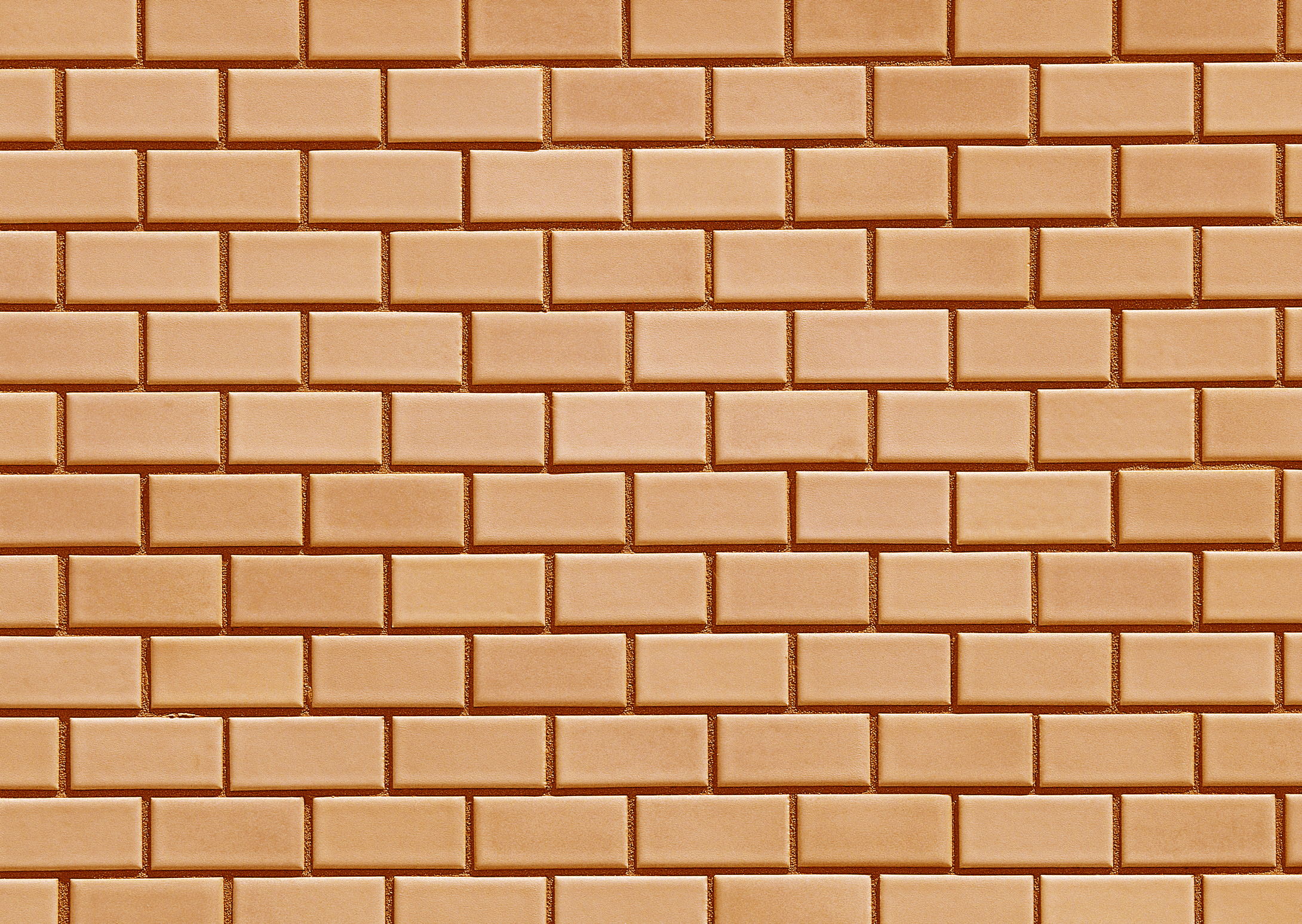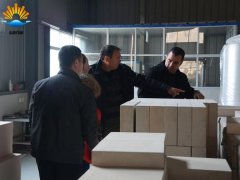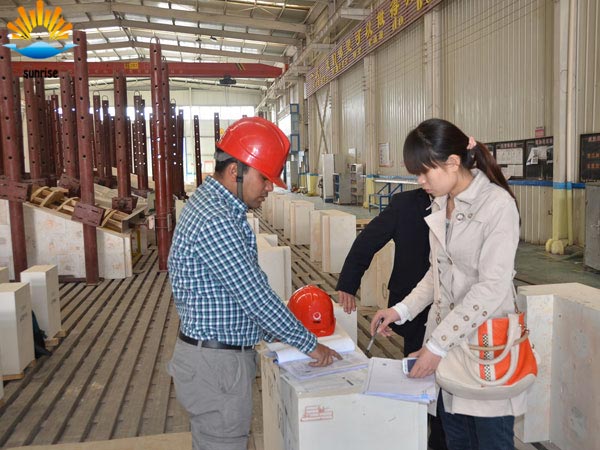Construction Of Furnace Refractory Line: General Masonry Regulation
Date:2015-10-26 00:04 From:Zhengzhou Sunrise Refractory Author:sunrise
1) According to the required fineness of construction, refractory masonry is divided into five categories. The thickness of each masonry should meet the following requirements:
a. Special Masonry not more than 0.5mm;
b. Type Ⅰ Masonry not more than 1mm;
c. Type Ⅱ Masonry not more than 2mm;
d. Type Ⅲ Masonry not more than 3mm;
e. Type Ⅳ Masonry not more than 3mm.

2)Refractory bricks should be selected and categorized based on the sizes according to the location and quality. How the brick is laid should be decided according to its structure to ensure its horizontal and vertical degree. The stretcher and header bricks should be classified according to the width and length. The shiner and rowlock bricks should be classified based on the width and thickness. The sailor and soldier bricks should be classified according to the thickness and length. Bricks should have the same dimensional tolerances to ensure that the dimension errors of the bricks meet the requirements of joints.
3)Pre-masonry should be done in the important and complex parts of the furnaces. The technical record should be made.
4)The center line and main elevation control line of industrial furnace should be determined by measurement according to the design.
5)Before masonry, check the setting-out line of setting-out line.
6)Metal embedded parts should be fixed in the masonry before or during the masonry. The gaps between the masonry and embedded parts as well as the filler in them should meet the design requirements.
7)The gaps between the transfer device and masonry should be set aside according to the required sizes.
8)Avoid the damping of refractory gas and insulation masonry.
9)The masonry should be constructed with stretcher bond.
10)All joints of masonry should be filled with mortar. Joints of dry masonry should be filled with refractory powder.
11)Avoid chiseling bricks on the masonry. When laying bricks, align bricks with a gavel or rubber mallet. After the mortar is dry, do not knock the masonry.
12)The machined surface of bricks should not be in the inner side of furnaces.
13)Holes (thermocouple holes, pressure holes, observation holes, etc.), channels, expansion joints and insulation layers should be reserved. The burner and burner channel should be strictly aligned to the center-line. The door should be insulated before installing.
14)The value, structure and distribution of expansion joints should be specified by the design. When the value of the expansion joints is not specified,the average value of expansion joints per meter may adopt the following data: fire clay brick-5~6mm, high alumina brick - 7~8mm and corundum brick - 9~10mm.
15)The position of expansion joints should avoid force parts, furnace frame and holes.
16)The expansion joints of the inner and outer layer should not interpenetrate each other. The expansion joints of the lower and upper layer should offset each other.
17)When half-brick thick expansion joints interpenetrate the insulation refractory, the insulation brick should be replaced with fire clay brick. Expansion joints interpenetrating the crown should be covered.
18)The reserved expansion joints should be uniform and straight. These expansion joints should be cleaned, especially the submerged joints and filled with materials according to the regulation.
19)Gaps between the brick supporting plate and the lower part of the masonry and the upper and lower part of the masonry should be reserved. The gap size and the filler should be selected according to the design.
20)When the expansion joints under the brick supporting plates can not meet the design size, the bricks under the brick supporting plates can be machined, but its thickness should not be less than 2/3 of the original bricks.
21)When the foundation has settlement joints, settlement joints of masonry on it should be reserved too and filled with asbestos rope, ceramic fiber or fillers.
22)The thickness should be measured with a 15mm wide feeler gauge with a thickness equal to that of the inspected bricks. If the insertion depth of the feeler gauge is not more than 20mm, the joints is qualified.
23)The thickness of joints and mortar plumpness should be checked. For general industrial furnaces and general parts of industrial furnaces, the mortar plumpness should not be less than 90%. For demanding parts that has strict requirements for air tightness or suffer from severe corrosion by molten metal and slags, it should not be less than 95%.
24)Masonry of high alumina bricks: a. The mortar should be modulated 24 hours in advance; b. The mortar should be previously applied to the contacting surface of bricks with a thickness of 2mm; c. The bricks should be laid as soon as the mortar is applied and tightened with a gavel or rubber mallet; d. Ensure the straightness of masonry with rope and keep all the surface clean before a new layer of bricks is laid; e. Sufficient expansion joints should be reserved for the steel anchors.
25)Masonry of insulation bricks: a. The mortar should be modulated 24 hours in advance; b. Those materials should not be cut with a double-edged hammer, but be cut and ground with the chainsaw blade, wood saw blade and grinding wheel.
26)Masonry of ceramic fiber board: a. Ceramic fiber board should be cut appropriately to fit the holes of the furnace steel shell; b. The board should be installed in a interleaved way; c. Joints and cracks should be filled with silicate cement; d. Gaps near the furnace shell should be filled with ceramic fiber.
Send an Inquiry
E-mail : sales@sunriserefr.com
Phone : +86-371-63838939 / Fax:+86-371-63835539
Company Address : No.36 Fengchan Road Of Zhengzhou, Henan, China (Mainland)

If you have any needs our help or are interested in our products, you can click online advisorychat with us online, or call our customer service telephone: 0086-0371-63838939. We will sincerely serve for you!
Product Category
- Fused Cast AZS
- Fused Cast AZS Block
- Fused Cast Skid Rail Block
- Fused Cast High Zirconia Block
- Fused Cast AZS Block
- Fiber Products
- Insulation Series Brick
- Fireclay Brick
- High Alumina Brick
- Corundum Brick
- Sillimanite Brick
- Mullite Brick
- Zircon Mullite Brick
- Zircon Brick
- Magnesia Brick
- Silica Brick
- Fused Cast Alumina Block
- Glass Mould Brick
Refractory Knowledge
moreCase

UAE to our factory inspection bri
...

Venezuela customer AZS fused bric
Venezuela customer AZS fused float glass furnace br...





